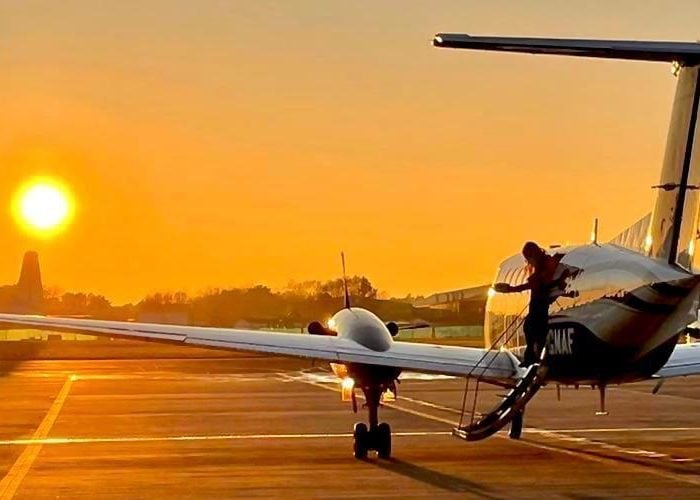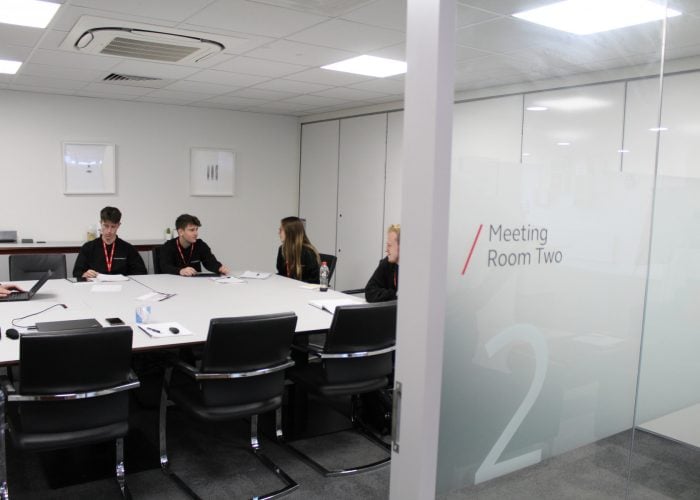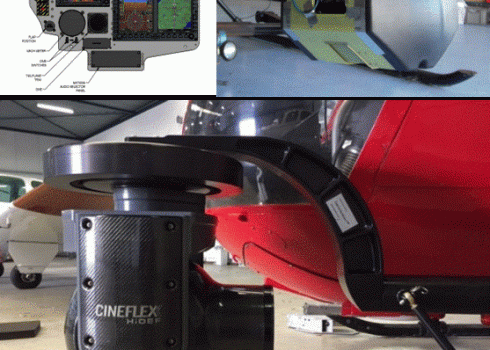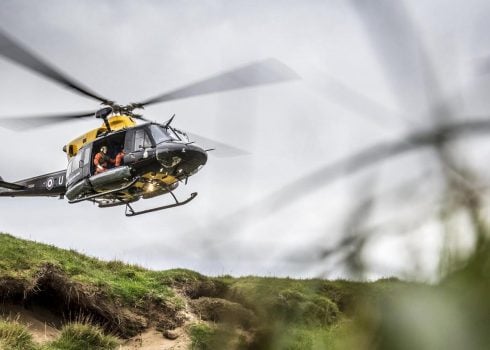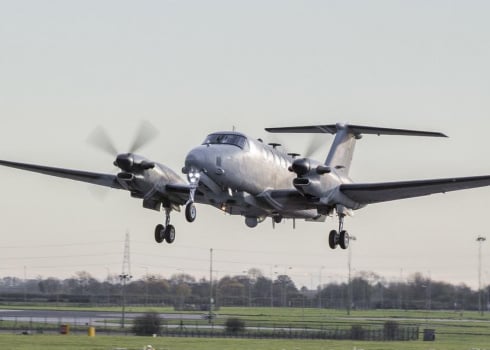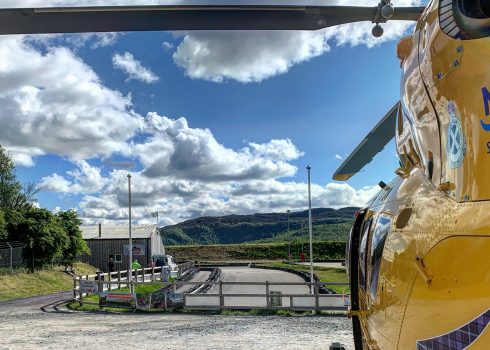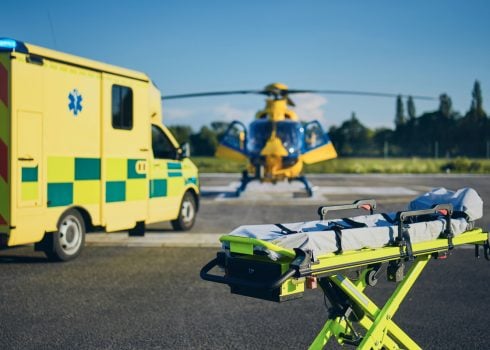Platforms that provide critical data to keep citizens safe
“Thank you for completing the flying for us, and for being so flexible during the nights of the mission. Your efforts are much appreciated as is the considerable skill of the pilots in dealing with the exact requirements of this mission.” Name withheld
Universally, our Homeland security, national security, law enforcement and policing customers select us due to our ability to remove complexity in their non-core competency aviation activities. Put simply, they focus on valuable data that provides stituational awareness from various threat vectors, while we focus on efficiently and effectively collectign that data using a variety of high-availability, mission equipped aviation assets (fixed wing, rotary or UAV). To achieve this our mission solutions programmes are based on a detailed understanding of the concept of operations (CONOPS), from which we will build a solution in the following way:
- Review the current civil platforms that are capable of delivering the mission
- Identify those that provide the best balance between operational cost and availability
- Determine the mission systems architecture (i.e. sensor package, rear operators)
- Purchase the platform on behalf of the Authority
- Design, install, flight test and deliver the platform(s) into service
- Recruit / train civil or Police personnel for flight operations
- Recruit / train civil or Police personnel for maintenance support
- Manage the through life condition of the aircraft on the civilian, BCAR or Police AOC
- Support the platform according to its main operating base or deployed location
- Dispose of the platform at the end of its life

A focus on availability
For our clients in this domain, mission availability is the foremost key performance indicator. To this end we are proud to deliver mission availability rates that are between 98 -100% across a fleet of assets. To achieve this the mission solution team focus on:
- Rapid deployment of support engineers
- A spares pool to smooth out supply chain issues
- Identification of fast track logistics channels
- Strong relationships with airframe, engine and mission equipment suppliers
The eyes in the sky that aide homeland security agencies
Employing disparate platforms and multiple sensors over an expansive geography, homeland security poses significant challenges at the platform selection, sensor integration and operational levels. Creating a datalinked network of information-sharing platforms, however, has the potential to increase value for money and, more importantly, enhance operational effectiveness, as a seemingly complex aircraft fleet becomes a mutually supportive team.
Homeland security is about people – keeping them safe, detecting and acting against illegal activity, delivering help quickly and efficiently whenever and wherever it is needed, and maintaining a presence to reassure and deter. Geography is a crucial deciding factor in how those results are achieved, in particular whether a maritime element is required, but the extent of patrolled borders and terrain are also significant.
Requiring persistence and careful observation, border patrol and protection may lend itself to a UAV operation, but which type of UAV – line of sight or beyond line of sight? And how does such an operation comply with local regulatory constraints? But then there is no technological replacement for the sharp eyes and honed instinct of an airborne human operator, so ought the UAV supplement crewed helicopters or light fixed-wing aircraft?
Illegal and economic migration pose challenges on land and at sea. Regular patrols with advanced sensors are as important for establishing ‘normal’ as they are for spotting criminal activity. But as with all sensor-equipped platforms, some of the data gathered is surplus to the mission yet potentially valuable elsewhere. Datalinking to a control centre, the cloud, or direct to anther platform, therefore enhances operational effectiveness manifold.
The sensors of a twin-turboprop, for example, searching for a vessel involved in criminal activity, might also detect pollution on the water, enabling the timely launch of other services to prevent environmental damage. Equally likely, it could spot a vessel in distress, triggering a SAR scramble with the immediate prospect of saving lives.
This information advantage can be applied over land with similar benefits. Equip a platform with an infrared sensor, for example, and it is ideally suited to border patrol. But that IR kit is equally capable of detecting accidental or natural fires, enabling prevention or swift containment.
Extending the networking concept to encompass aircraft engaged in homeland security, resource monitoring and law enforcement brings these discrete missions into a single data-gathering entity, enhancing efficiency in every task, regardless of market, by sharing relevant data from other platforms, while expanding homeland security operations through the exploitation of otherwise unused information.
Systems commonality, efficient data gathering and exploitation, platform optimisation, and robust command and control are critical factors in effectively deploying homeland security aviation assets. Gama Aviation’s platform agnostic approach, market knowledge, and compliance and operational know how make it the primary choice for complex mission fulfilment. Bringing with them industry-leading experience, Gama Aviation’s subject matter experts are ready to offer advice on upgrading existing systems and acquiring new platforms, to deliver engineering and operational support, or provide complete, turn-key solutions.
Ultimately, combining your homeland security requirements with our law enforcement expertise delivers market-spanning, integrated solutions, enhancing operational and cost effectiveness on every mission.
Changing mission envelopes that require the use of multiple assets from helicopters to UAV to fixed wing
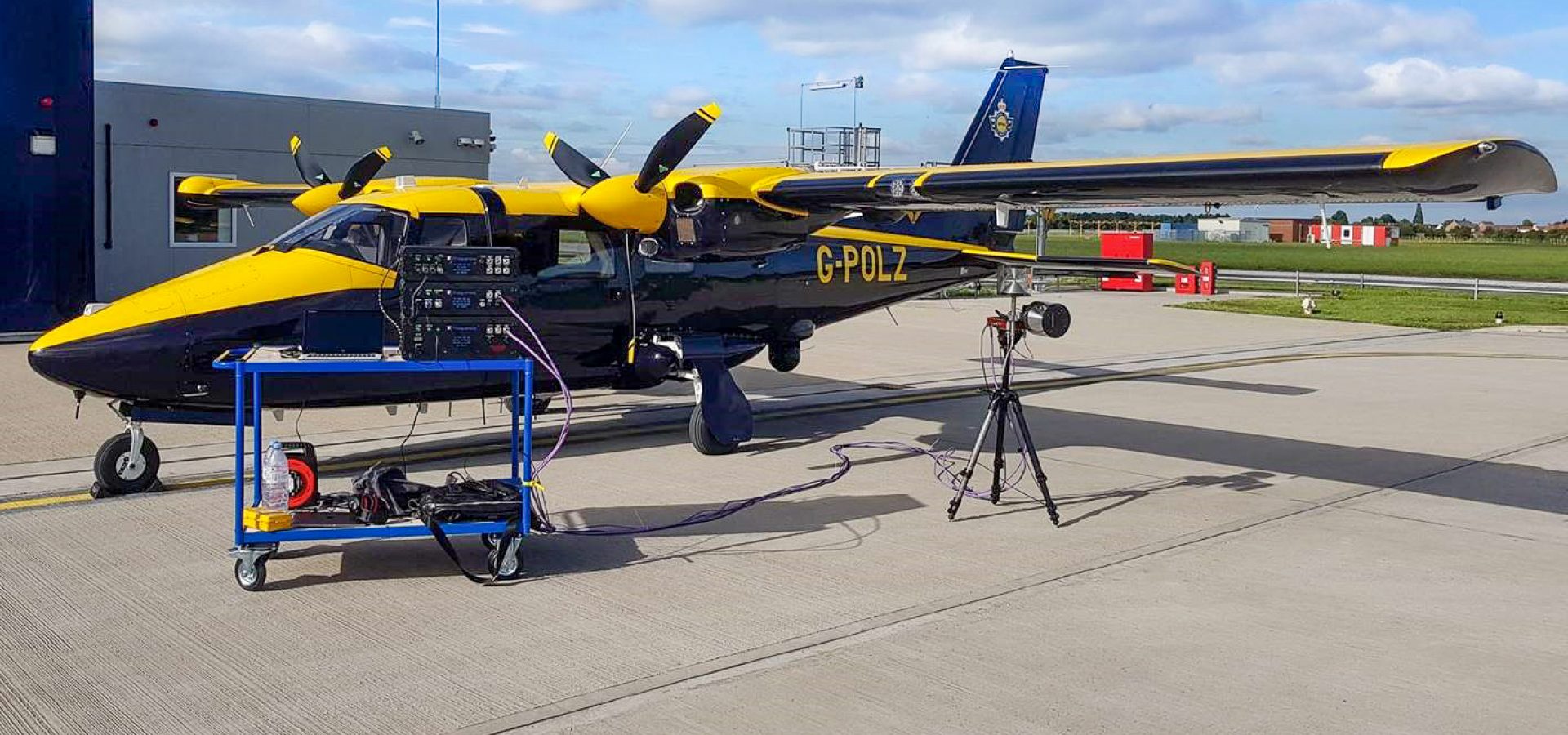
The requirements of police aviation, seem especially straightforward. A helicopter, equipped with an electro-optical sensor and appropriate radios, is the obvious platform to mount a police observer directly assisting officers on the ground. It is the way police aviation support has traditionally been achieved, with acceptable results for the most part.
When it comes to tracking unfolding events on the ground, or flying command and control over an active crime scene, nothing compares to the view, speed of reaction and manoeuvrability a helicopter affords a well-trained police observer. But is a mission-equipped helicopter always the most operationally relevant solution? It is almost certainly not always the most cost effective.
Where the mission requires persistent over-watch, a UAV – even a relatively simple line-of-site system – offers an effective, cost-efficient means of generating real-time video imagery that may be used in concert with ground or other airborne assets. With the UAV on station, the helicopter can be employing its high-end capability elsewhere to greater effect, yet ready to respond to developments spotted by the UAV.
There is also a law enforcement role for fixed-wing crewed aircraft. The higher speed and greater reach of a fixed-wing aircraft compared to a helicopter makes it the more suitable platform for wide-area search and where persistent observation is required over large geographical areas. A light aircraft with sufficient capacity for pilot and observer, police radios and EO sensor is the simple choice for such missions, but may not be cost-effective in the longer term.
Adding capability to an airframe inevitably leads to the desire for more. Meanwhile, rapid developments in sensor and communications technology mean new equipment may become available and committing to an aircraft of limited capacity at the beginning of a contract could mean compromising mission capability later on.
But delivering effective police aviation support is about more than platforms. Smart basing keeps assets close to where their services are most likely to be needed, while intelligent maintenance programmes, support and compliance assurance, guarantees availability.
Still on the ground, the key to maximising efficiency and capability is the control centre, potentially enhanced through networking. Datalinking a UAV or helicopter EO feed enables real-time off-platform analysis and intelligence/evidence collection. In the case of the helicopter or other crewed platform, off-board analysis may be complementary or in addition to that performed by the flying observer, effectively adding additional mission crew at minimal expense.
Expanding the concept, there is considerable commonality in platform requirements for resource monitoring, homeland security and law enforcement – an IR sensor is as capable of spotting a nascent heath fire, a fugitive or missing person whatever platform it is mounted on, and networking multiple platforms across agencies generates a resource that increases value for money and effectiveness for all.
We are uniquely placed to deliver capability in the important police aviation, resource monitoring and homeland security markets. From advice on platform selection and upgrade, through maintenance, compliance and training support, to complete operational solutions, its world-class team, track record and agility make us the ideal partner in delivering modern, cost-effective, advanced police aviation services.
Gathering intelligence on threats to national security
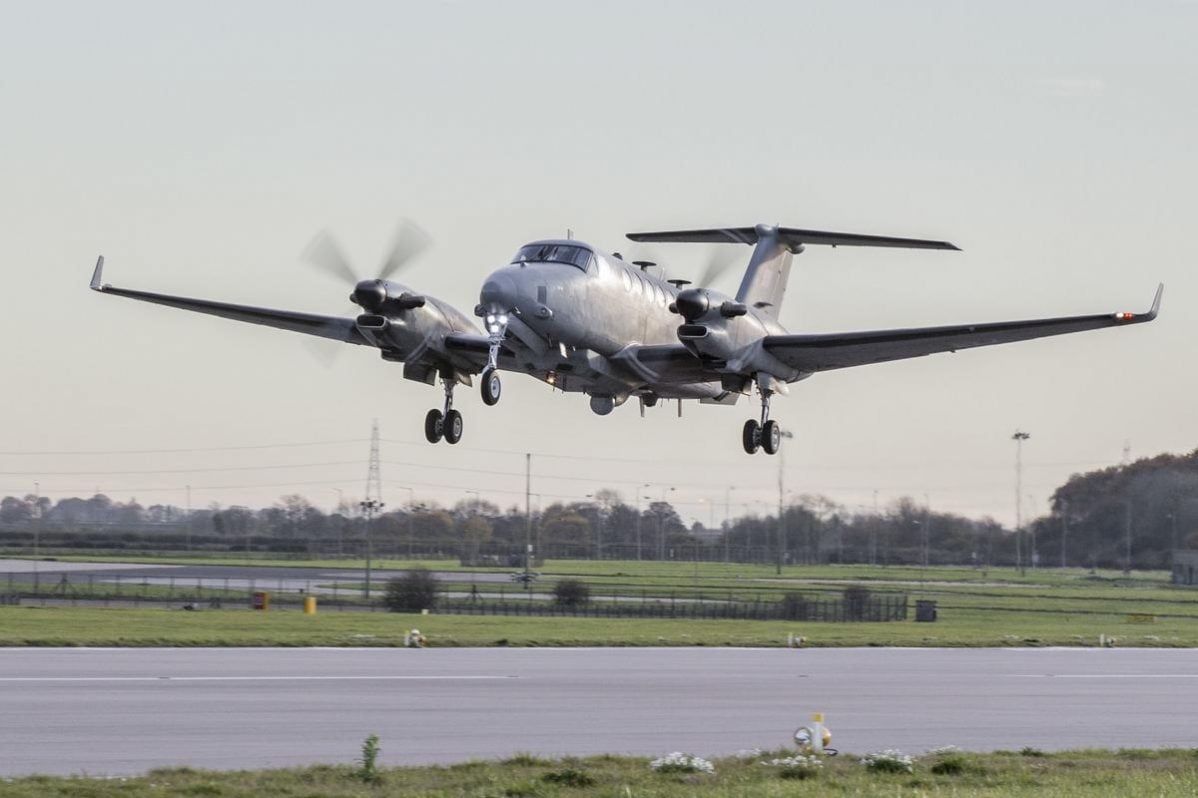
Learning what’s ‘over the hill’, gathering intelligence a potential threat and collecting pattern-of-life information have been critical tasks since the dawn of military aviation. Indeed, armies employed balloons and perhaps even man-lifting kites as reconnaissance platforms long before the first heavier-than-air aeroplanes became a viable alternative.
Today, ISR encompasses intelligence, surveillance, target acquisition and reconnaissance, traditional missions completed through a combination of platforms and sensors, gathering imagery, video and electronic data across the frequency spectrum, usually networked and perhaps sharing information via secure cloud-based systems.
Modern technologies enable high-end capability on smaller platforms, while sensor-equipped UAVs open up the possibility of combining crewed and uncrewed platforms in the same ISR network. The result may be a complex system of systems, but the aim is always the same – collecting timely, accurate intelligence efficiently and cost-effectively.
With proven experience in ISR platform generation and in-service support, Gama Aviation has the capability to advise on platform selection, modify existing or newly sourced platforms for sensor integration, provide through-life support, or deliver a complete operational package. And, since the ISR platform of choice is frequently a business jet or small turboprop, Gama Aviation’s decades of business aviation experience offer an added layer of reassurance.
We understand the complexities and sensitivities of the ISR mission. Its subject matter experts are ready to advise on the suitability of existing platforms for ISR enhancement or modification, or on the optimum platform acquisition for your mission requirement. Thanks to our in-house engineering capability, we can modify your aircraft away from the public eye, helping ensure discrete service entry.
Externally, an ISR platform requires antennas, radomes, turrets and other additions to support its mission suite. Internally it will need one or more sensor operator or specialist crew stations. Gama Aviation is ready to engineer those modifications, whether you need an airframe modified ready for your mission suite integrator, or a complete, ready-to-fly package. We are also expert in performance modifications – installing long-range fuel tanks for extended endurance, for example – and equipping your aircraft to the latest avionics standards.
With its extensive engineering and compliance experience, we are the logical partner to provide complete support once your ISR platform is operational. Regular base maintenance is efficiently accomplished by our personnel stationed alongside your aircraft, with deeper maintenance performed at our secure facilities. We also offers proven and complete deployable support, providing the same standards of engineering capability when platforms are stationed away from home.
Combining these elements of expertise, we are the partner of choice for complete mission delivery. Our ability to source aircraft, modify airframes, install mission systems, offer through-life support and provide flight and mission crew, means we can deliver turn-key bespoke ISR capability whatever your mission.
Contact us
National Security & Policing Contact Details
Supported aircraft
Airbus H145
The Airbus H145 helicopter is our aircraft of choice for HEMS operations. Find out more here.
Read moreLeonardo AW169.
The AW 169 is one of the most versatile multi role, emergency rotorcraft airframes in theatre
Read moreBritten Norman BN2-T Islander
The Britten Norman Islander BN-2T is used within both a civilian and Special Mission context being able to accommodate various interior fitments from executive to up to three stretchers for Air Ambulance operations.
Read moreBeechcraft King Air 200 series
We offer operational & maintenance expertise across the Beechcraft King Air 200 series of aircraft.
Read moreBeechcraft King Air 300 series
We offer availability and expertise across the BAE Hawker series of aircraft, including charter services, maintenance approval and capabilities and we have extensive management experience, having owned and operated BAE Hawker aircraft ourselves and for our clients.
Read moreLocations
Group Headquarters, 25 Templer Avenue, Farnborough.
25 Templer Avenue, Farnborough is home to our Group headquarters and is the nerve centre for the European Air division. With excellent access to the facilities at the airport.
Read moreBournemouth International Airport (EGHH)
Our Bournemouth International Airport facility, a hangar and office facility of over 135,000 sq ft provides an extraordinary space which we aim to turn into one of Europe’s flagship business aviation facilities.
Read moreGloucester Airport (Staverton)
Gloucester Airport is the home of our Leonardo AW169 and AW139 maintenance capability as well as the centre of excellence for AW169 air ambulance interiors.
Read more
